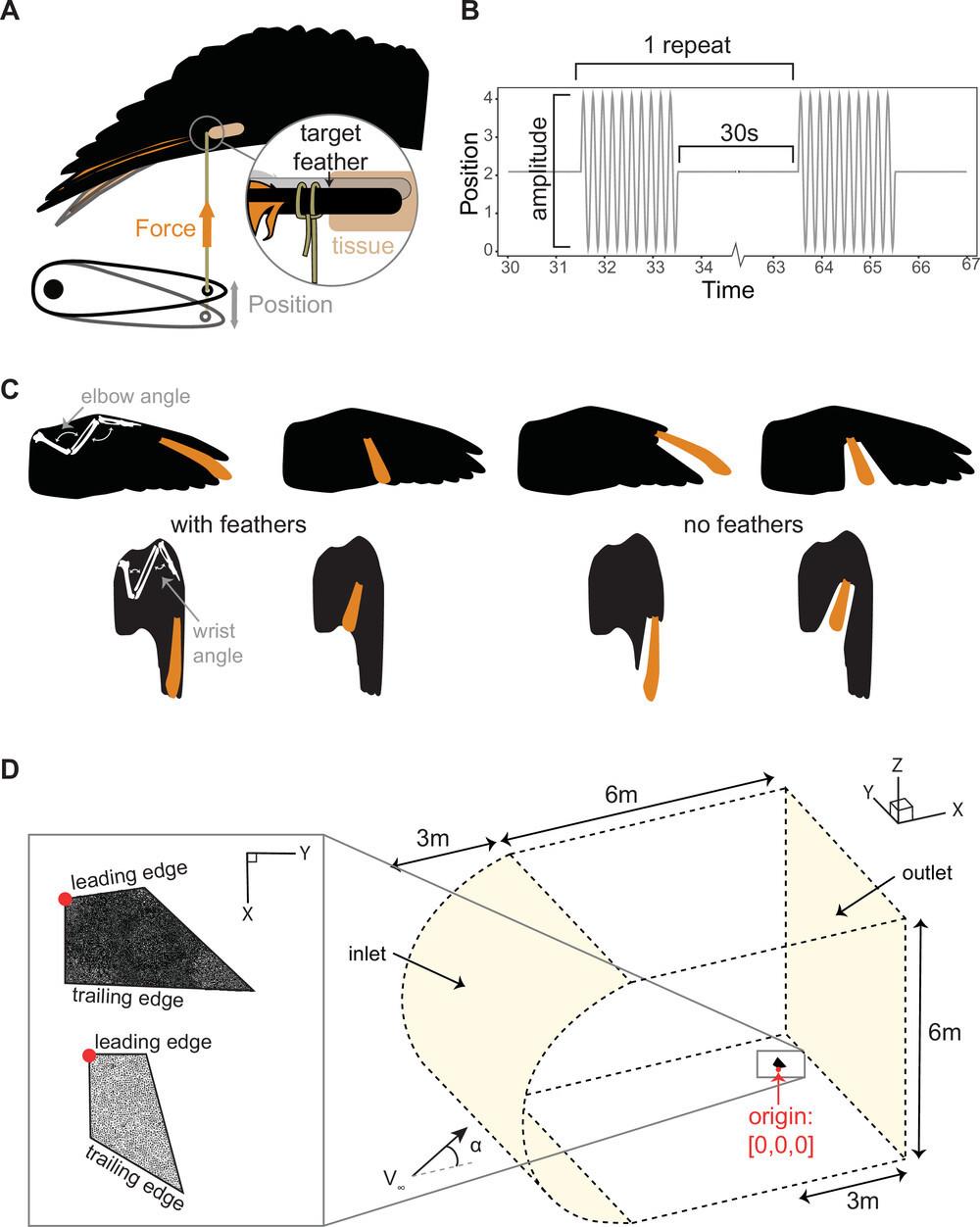
Figure 1. Experimental methods to quantify the mechanical properties of a pigeon wing and models for computational fluid–structure interaction simulations. (A) An anaesthetized pigeon was placed ventral side up and the base of a feather was tethered to a servomotor arm. The arm actuated a position change (grey arrow) which displaced the attached target feather while recording the tension force (orange arrow) generated along the string as the feather resisted this displacement. (B) A sample of the 5 Hz position change actuated by the servomotor. (C) The pigeon wing was positioned in an extended (upper) or folded (lower) position with and without neighbouring feathers. The elbow angle was defined as the acute angle formed by the humerus and the radius bones and wrist angle as the acute angle formed by the ulna and carpometacarpus bones. A distal and a proximal feather were tested (highlighted in orange). (D) A simplified extended and folded wing (insert) was modelled and meshed with 2.5 (upper example mesh) to 5 mm (lower example mesh) within a larger fluid volume for simulation.
Jasmin C. M. Wong, Vaibhav Joshi, Rajeev K. Jaiman and Douglas L. Altshuler. 2025. Wing extension–flexion coupled aeroelastic effects improve avian gliding performance. Journal of the Royal Society Interface
Abstract
During flight, birds instigate remarkably large changes in wing shape, commonly termed ‘wing morphing’. These changes in shape, particularly extension–flexion, have been well documented to influence the production of aerodynamic forces. However, it is unknown how wing stiffness changes as a result of the structural rearrangements needed for morphing. We address this gap in knowledge through mechanical testing of in situ flight feathers in anaesthetized pigeons and found that while the most distal portion of the feathered wing remained unaffected, proximal areas saw an increase in out-of-plane stiffness due to wing folding. Following this, we used computational fluid–structure interaction simulations to evaluate how this morphing-coupled change in stiffness might modulate local flow patterns to affect aerodynamic performance. We found that flexible wings perform better than entirely rigid wings as an increase in near-wall vorticity delayed flow separation. Furthermore, an increase in stiffness in a folded wing during high-speed flight prevented the reduction in lift seen in more flexible cases caused by aeroelastic flutter modes destructively interfering with shed leading-edge vortices. Collectively, these results reveal that mechanical changes coupled with wing morphing can provide a speed-dependent mechanism to enhance flight performance.